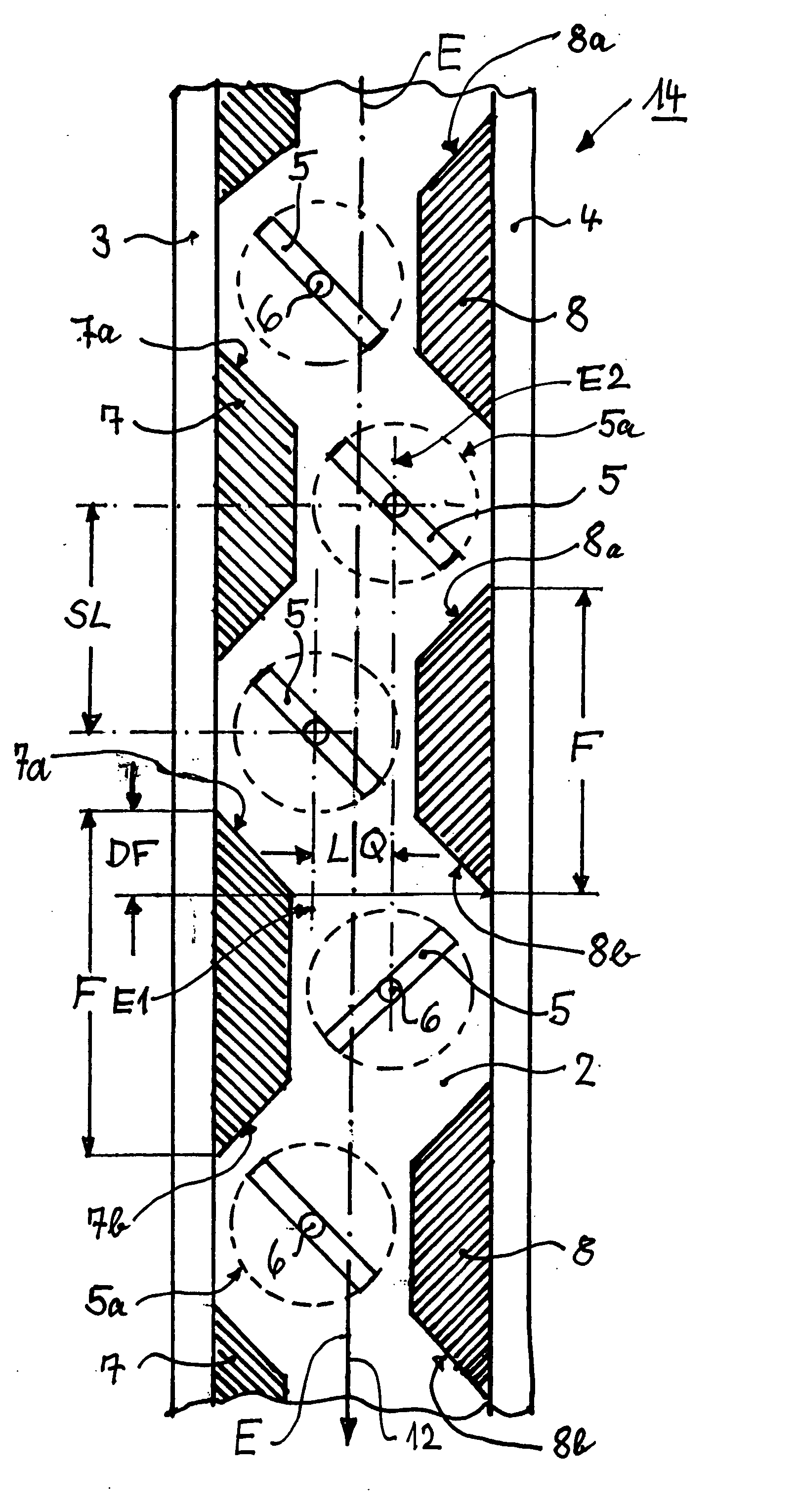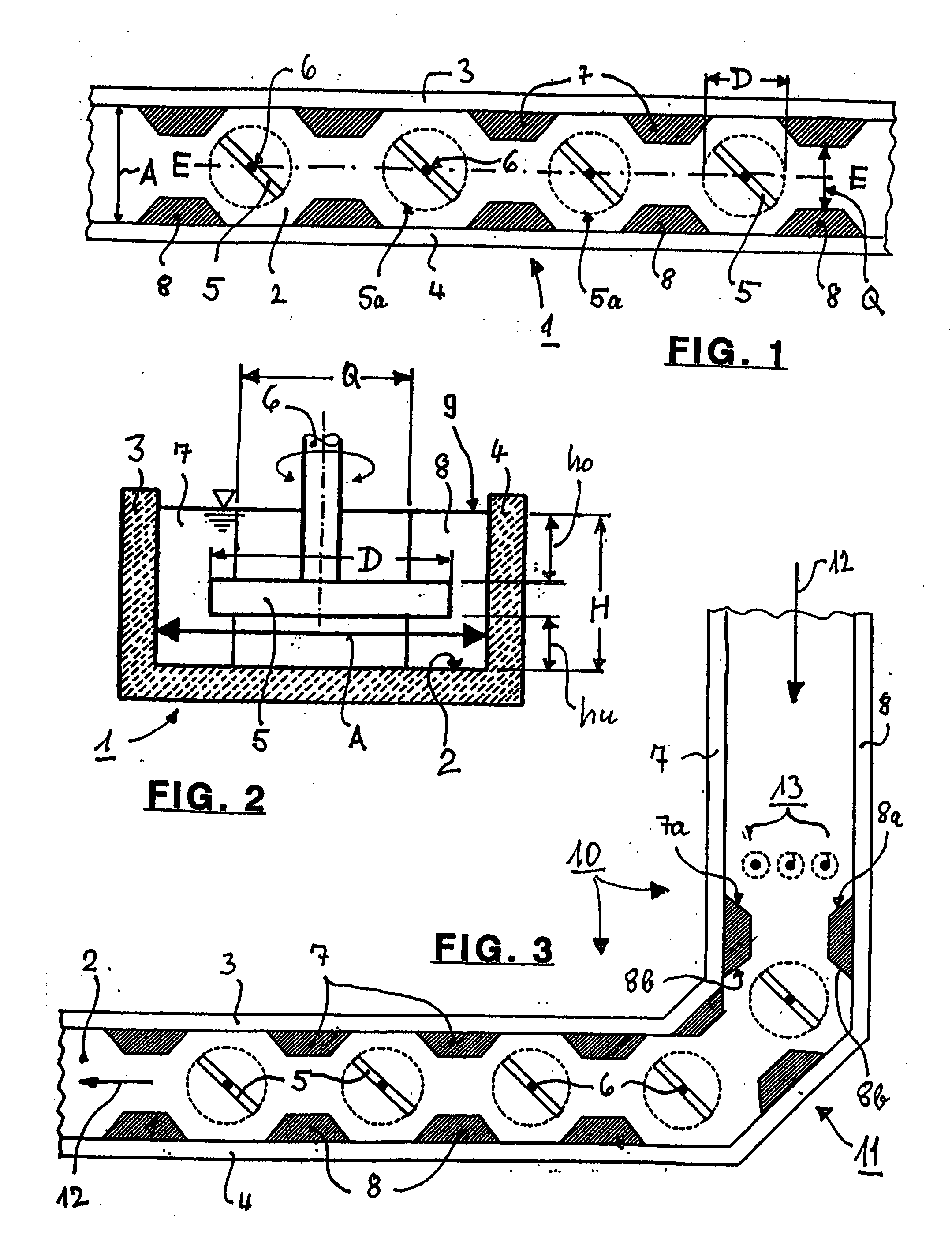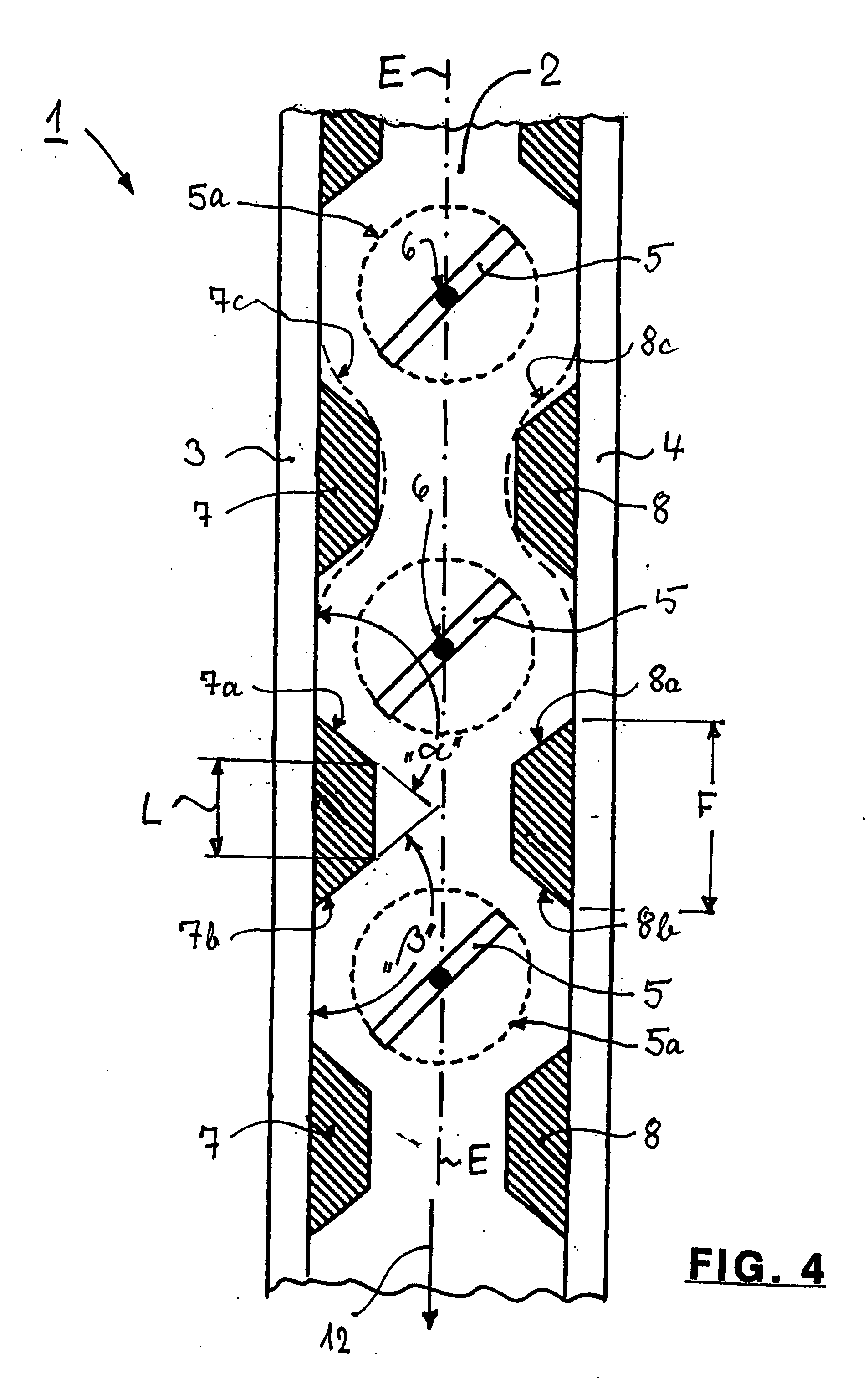Method and apparatus for the conditioning and homogenization of glass melts
a technology of glass melt and homogenization, which is applied in the field of conditioning and homogenizing glass melt, can solve the problems of large glass loss, long cleaning period, and differences in glass concentration and density, and achieve the effect of effective homogenizing the main glass flow, reducing cleaning time and glass loss, and high flexibility of the total plan
- Summary
- Abstract
- Description
- Claims
- Application Information
AI Technical Summary
Benefits of technology
Problems solved by technology
Method used
Image
Examples
Embodiment Construction
[0062]FIG. 1 shows a flow channel 1 with a flat channel bottom 2, two vertical parallel side walls 3 and 4 and four stirrers 5 with vertical stirrer shafts 6. The broken circles represent the so-called enveloping surfaces 5a that are traversed by the outermost points of the stirrer paddles during rotation of the stirrers 5. The diameter “D” of these circles and so also of the stirrer paddles, is between 360 and 560 mm. The inner channel width is defined by the clearance “A”, which is at least 400 mm and may even exceed 1000 mm, and so determines the width of the glass flow.
[0063] The flow channel 1 has a vertical central longitudinal plane E-E, in which the axes of the stirrer shafts 6 lie. The side walls 3 and 4 have protrusions 7 and 8, that are installed opposite to one another in pairs and symmetrical to the central longitudinal plane E-E, and reduce the clearance “A” of the cross-section to dimension “Q”. The ratio Q:A is between 0.5 and 0.9. This produces so-called pockets, i...
PUM
| Property | Measurement | Unit |
|---|---|---|
| Length | aaaaa | aaaaa |
| Length | aaaaa | aaaaa |
| Length | aaaaa | aaaaa |
Abstract
Description
Claims
Application Information
 Login to View More
Login to View More - R&D
- Intellectual Property
- Life Sciences
- Materials
- Tech Scout
- Unparalleled Data Quality
- Higher Quality Content
- 60% Fewer Hallucinations
Browse by: Latest US Patents, China's latest patents, Technical Efficacy Thesaurus, Application Domain, Technology Topic, Popular Technical Reports.
© 2025 PatSnap. All rights reserved.Legal|Privacy policy|Modern Slavery Act Transparency Statement|Sitemap|About US| Contact US: help@patsnap.com



